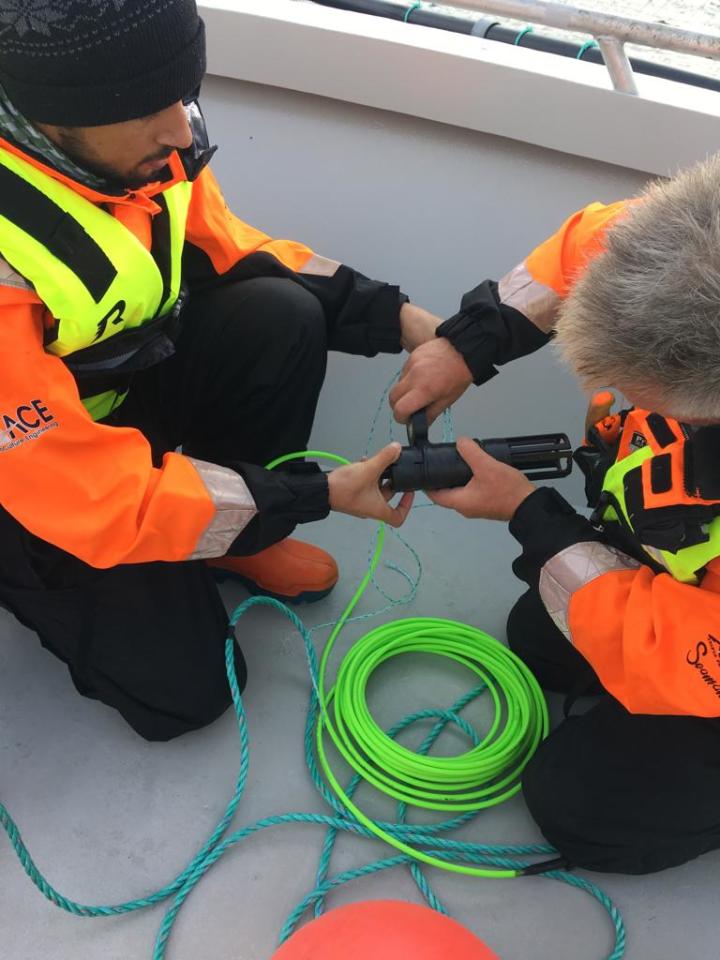A salmon can’t pick up and drop its supper dish like a dog, so how do you know if they are hungry? It’s an important question in aquaculture, and by using a combination of audio sensors and artificial intelligence, the Smart System for Feeding Control (SICA) offers a new way to answer it.
Farmed salmon make up between 60 and 70 percent of all salmon produced today, but the process suffers from an efficiency problem. Like any fish, salmon need to be fed. The problem for the farmer is to make sure the growing salmon get enough food to stay healthy and put on weight, but not so much that the food is wasted or starts to have a negative impact on the local environment.
Feed can account for half the cost of farming salmon, so making mealtimes more efficient also has a major impact on profits. Unfortunately, figuring out whether or not a salmon is hungry isn’t easy. Currently farmers rely on techniques like monitoring behavior by video, which are expensive and intrusive.
Developed by the Marine Technology Centre (CTN) in Spain, SICA is an automatic feeding system that ditches the cameras in favor of passive acoustic sensors and artificial intelligence as a more reliable way to monitor and control salmon behavior. It consists of a Data Logger and Control Unit with the Data Logger placed inside sea cages with the salmon. This picks up the sound of the fish moving about, pre-processes it, and transmits the data wirelessly to the Control Unit. Set on a barge, this uses machine learning to autonomously learn about the behavior of the salmon and to decide when and how much to feed them.

Hamid Er-Rachdi/Rosa Martínez/CTN
The sensors are designed to be non-invasive and operate in real time. This allows the system to better detect unusual behavior that indicates how much a fish is eating at a particular time and, hence, how hungry it is. In this way, the fish can be kept well-fed without releasing wasted food into the environment.
SICA was first tested on sea bass farms in the Mediterrranean by CTN before moving on to full-scale tests at the SINTEF ACE full-scale aquaculture facilities in Frøya, Norway to both see how it handles different environments and to help the system to learn better.
“We needed access to good facilities to get the best results, and especially under such harsh conditions,” says Rosa Martínez Álvarez-Castellanos of CTN. “In particular, we were able to test our equipment under different weather conditions and with the proper feeding equipment. The results showed that our concept is working.”
Source: Norwegian University of Science and Technology
Source of Article